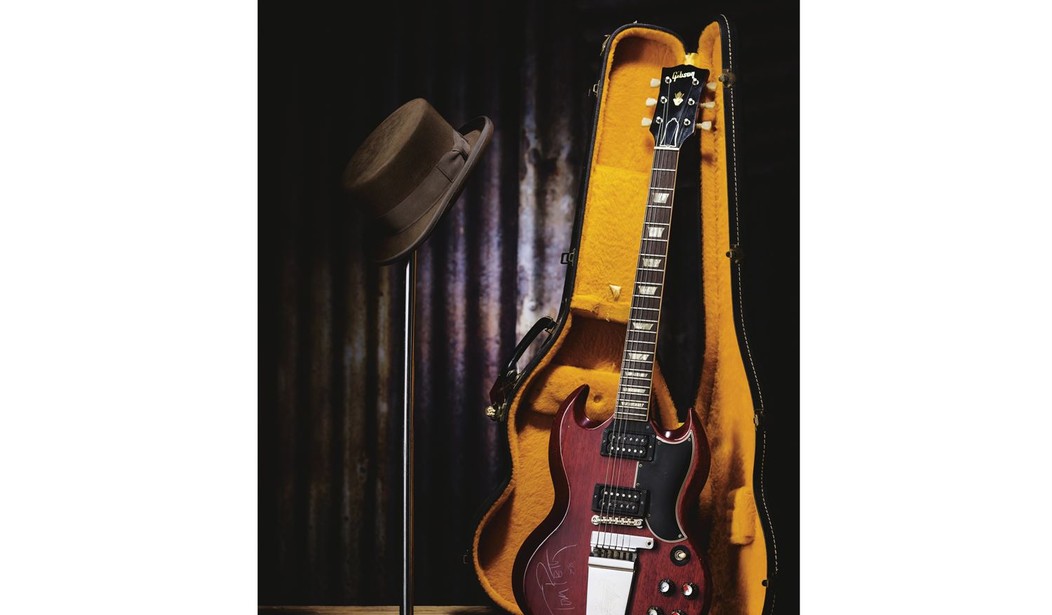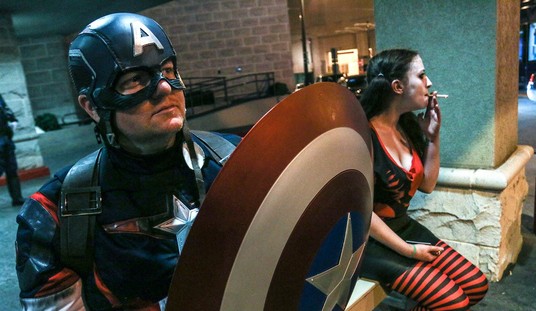Some weeks back, I wrote a few words appreciating the Gibson Les Paul Deluxe, a guitar regrettably relegated to redheaded stepchild in the Les Paul family. This time through, let’s celebrate Gibson’s electric redheaded stepchild period. Namely, the SG.
For the record, SG stands for Solid Guitar, thus proving that even Gibson has off days in the creativity department. The guitar was born from necessity. As the 1950s slid into the 1960s, Gibson’s electric guitar sales were sliding downward. The Les Paul was rapidly losing favor. Seen as a jazz and pop guitar, its championing as a rock’n’roll machine by the likes of Eric Clapton and Duane Allman was still some years away. As were Clapton and Allman, to be accurate. The semi-hollow body ES-335, introduced in 1958, was doing well but didn’t satisfy many rock’n’rollers looking for something lighter and more nimble. Also, despite its expert wielding in Chuck Berry and B.B. King’s hands, it wasn’t sexy looking in the least. Gibson needed something to go up against Fender’s Telecaster and especially Stratocaster; a solid body with panache.
Enter the SG, which started life as the redesigned Les Paul. Gone was the design of a thick mahogany body underneath a maple top, shaped like a traditional single cutaway jazz archtop guitar, albeit smaller. Instead, asymmetrical pointed cutouts topped a one-piece mahogany body significantly thinner and lighter than its predecessor. Occasionally dubbed devil’s horns, should an SG appear in a worship band, this description quickly shifts to the tips of angel’s wings dipped in the blood of the martyrs.
The SG, not yet an SG but a Les Paul even though there were already guitars named SG (reference Guitar World for as straightforward as possible a breakdown of what guitar was named what) was an immediate hit upon its 1961 release. Unfortunately, three major problems quickly became apparent. Although the guitar’s design provided easy access to the neck’s upper region, the resulting neck-body connection was highly fragile. Gibson gradually fixed this throughout the 1960s until 1968, when the company finally got it right. Second, after every use, the tremolo Gibson designed for the guitar was prone to creating unusual and exciting tunings never before heard. These, alas, regrettably seldom aligned with normalcy. Third, Les Paul intensely disliked his name coopted to a guitar he had no part in creating; that, plus desiring to divest himself of as many income sources as possible before his looming divorce, led him to ask Gibson for discontinuance of his name on the guitar. At this point, the SG, which was not yet an SG but a Les Paul even though it wasn’t a Les Paul — got all that? — became the SG once and for all.
Although the SG has long played second fiddle to the Les Paul, it has had its champions over the years. The first of note was Sister Rosetta Tharpe.
Robby Krieger of The Doors regularly used an SG.
Eric Clapton employed a psychedelic paint scheme-sporting SG during much of his time with Cream.
Pete Townshend of The Who often used, abused, and used up SGs.
As the 1970s rolled around and with them the original (more or less) Les Paul, the SG fell out of favor, although it still made its presence felt. There was Frank Marino of Mahogany Rush.
Tony Iommi of Black Sabbath seldom used anything other than an SG.
And, of course, no SG story can pass by the mighty mite himself, AC/DC’s Angus Young.
These days, Derek Trucks plays a wicked good SG.
And if you’re into Led Zeppelin cover bands, there’s Jake Kiszka from Greta Van Fleet.
So, despite its second-class status (“couldn’t afford a Les Paul, huh?”), the Gibson SG, when in the right hands, is second to none. Its tone is bright and warm, flexible enough for multiple music styles. At its heart, though, the SG is a powerhouse machine ready to rumble. Rock on, SG.














Join the conversation as a VIP Member